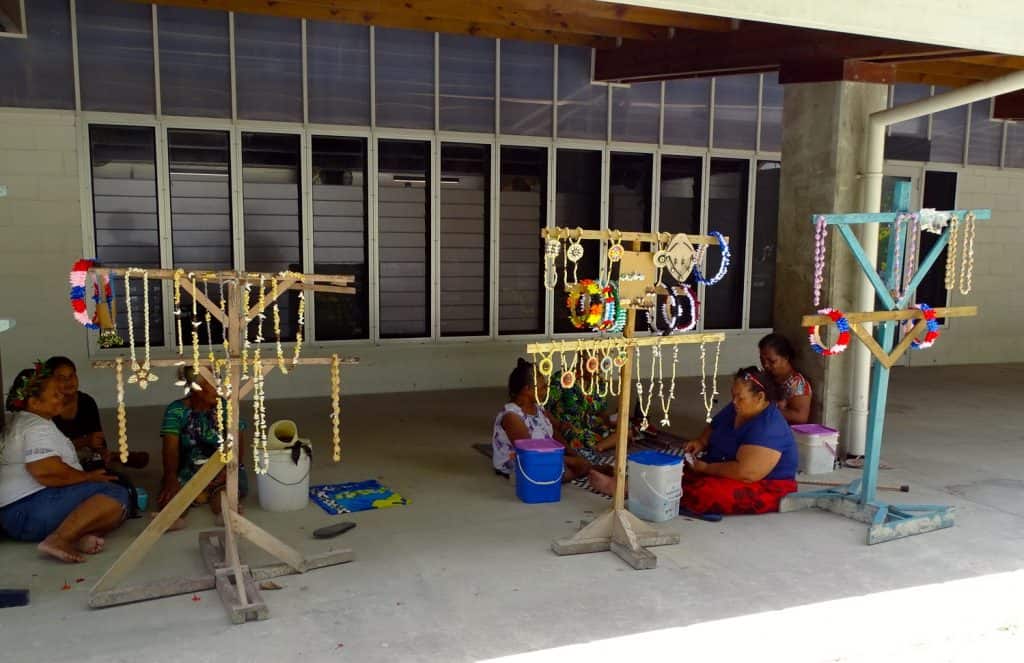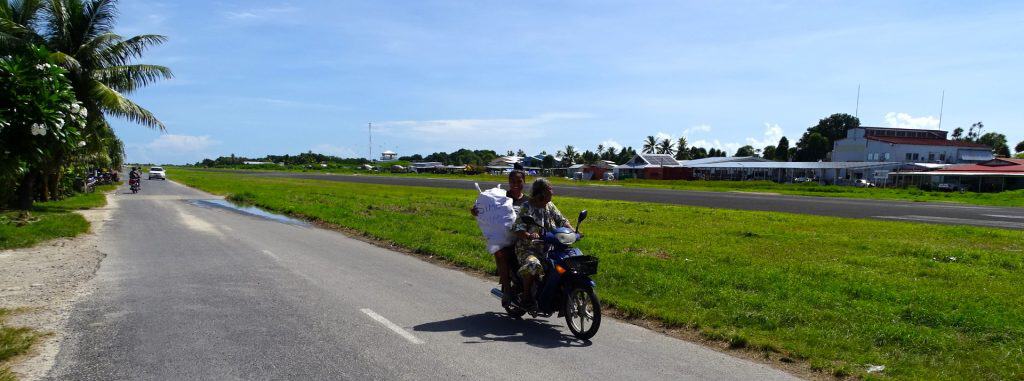By Kalinga Seneviratne
By any standards, Tuvalu would be considered a unique place to visit – after all, it is at the frontline of the battle against climate change. But as a travel destination, it is a world apart. In a world of its own.
Until I arrived in Tuvalu, I had not seen an airport that was not fenced. So, the sight at Funafuti International Airport was a rare one. Looking out the window as the aircraft waited to offload, I saw motorbikes and cars crossing the runway. They certainly weren’t airport vehicles.
Little did I know, that was just the start of entering into a world defined by the unconventional.
I stayed at a hotel that was just a few steps from the airport terminal. In fact, it was basically within the airport area. Once you’re through immigration and customs, the hotel is simply a two-minute walk from the terminal.
Funafuti International Airport gets only three scheduled flights a week – Tuesdays, Thursdays, and Saturdays. All are propeller driven Fiji Airways flights from Suva that take about three hours.
On either side of the runway are two streets, one of which stays busy throughout the day.
There is no fencing between the streets and the runway. Thus, children, as well as adults, use the runway in the evenings to play football, a Tuvaluan version of volleyball, and for cycling.
It appeared to be the most popular hangout for the people of Funafuti in the evenings before sunset.
Tuvalu’s population of about 11,200 is scattered across nine islands (four reef islands and five coral atolls) spread far apart.

The atoll island of Funafuti accommodates half the country’s population.
Funafuti has only three hotels. They would be considered small by international standards. Tuvalu’s remoteness and the cost of airfares are a deterrent for tourism. Hotels seem to be mainly occupied by expatriate consultants on short-term assignments. Hence, there is no tourism infrastructure.
There are no taxis, tour guides or tour agencies in town. The local currency is the Australian dollar and you need to carry cash to get you through your holiday because hotels and shops don’t take credit cards – even Australian ones. And, if you happen to run out of cash, there are no ATMs on the island, nor is the National Bank of Tuvalu willing to help you to draw cash from overseas. They will, however, change US or Fijian dollars into Australian dollars.
Tuvalu is a unique destination that could do with more attention from airlines. But the airport runway is too small for jet engine planes.
Tuvalu is halfway between Australia and the United States West Coast. Vasa Saitala, President for Women in Maritime (Tuvalu), told Fiji Traveller that Tuvalu is not a popular tourism destination because of high airfares.
“When we first started to develop tourism, women were encouraged to provide rooms for tourists, like Airbnb homes. I was one of the ladies that offered. There was no business and that discouraged us, because we may have one visitor for the whole year. Not worth preparing for such an industry.”
Tuvalu makes for the ideal holiday destination for a quiet vacation among people that do not rush with their daily living.
They are friendly people and most locals speak English. It is very safe – even the Prime Minister’s residence next to the runway is not guarded.
Funafuti atoll runs 20 kilometres north to south and 20 to 400 metres wide at various points. The road that connects the two ends is the only main road on the atoll, with a few small lanes branching into suburbs in the town area. At the northern end in particular, a long stretch of the road is a narrow strip of land with the sea on either side. A house and a few coconut trees stand precariously against an encroaching sea.
On the west side of the atoll is the surf sea with hardly any beach at high tide. On the east side is a large lagoon of 275 square kilometres. At low tide in particular, there are some good sandy beaches with shallow calm seas where local children cool down and play. This idyllic scenario may not last long.
“Sea has reached our main road … even here, you can see some island beaches are going down. Most coconut trees on the coast are down,” lamented retired civil servant, Seleta Kapua Taupo.
To save Funafuti from the rising sea levels, the Tuvalu government has gone into a partnership with the UN Development Program and the Green Climate Fund at a price tag of US$36 million to reclaim land and build a three-to-fivemetre high platform from coral sand pumped from the lagoon to protect the land from submerging. It is a tourist attraction by itself, especially in the evening when locals come there for walks, fishing and playing.

Presently about the size of two football fields with white sandy earth, it will have a new town built on top of it in a few years.
A tourist wanting to explore the island has three choices – hire a scooter or a car, or if you are up to it, you can walk up and down the island. Most locals use motorbikes and some have trailers to transport kids and goods. Twice, a local man offered me a free ride on the back of his motorcycle, when he saw me walking in the hot midday sun.
I also hired a car for a day from one of the car dealers (there’s only two of them) for AU$120 a day. After I gave him the cash, he gave me the car without checking credentials or any paperwork.
Later, I thought it made sense because I would not be getting very far if I stole the car!
There are no pubs or nightclubs in Funafuti, and eating out at night is not a choice, except for one café and the three tourist hotels.
A local contact took me to a community festival to see a traditional Faitele dance and song performance to celebrate a special occasion where some 130 years ago, Tuvaluans had to pay off a European copra dealer who threatened to take over the islands. The groups performed in colourful dresses and jovial expressions, and everyone, including guests like me, sat on mats placed on the floor of a community hall.
The Faitele is an energetic dance to the rhythm of a communal wooden drum played by a group seated around it on the ground.
The tempo gradually increases until the dancers get tired and it ends with laughter and chatter. This could be a great tourism spectacle, but I was told that it is performed rarely and at special occasions – not even at weddings or birthdays.
Tuvaluans have been burying their dead near the beach, but now every new home has a tomb in front, because coastal erosion has begun to wash away some of the original burial grounds.
Tuvalu does not have any wet markets (selling fruits and vegetables) nor a fish market. The only vegetable farm is run by a Taiwanese group under a foreign aid program, just next to the airport by the sea. Twice a week, they sell produce from the farm – cucumbers, spinach, and pumpkins – which is sold out within 30 minutes. Some houses, though, have small vegetable plots for their own consumption.
This unique travel experience lasts right up to the time you leave when a fire truck with its sirens blowing will drive alongside the runway to warn traffic along the parallel street to take a detour. The roads have to be blocked because the plane needs to cross the road to reach the terminal building. Meanwhile, departing travellers can buy some necklaces and belts made with seashells and locally woven purses from three women selling them outside the terminal building, the only way to buy a local souvenir.
Kalinga Seneviratne spent five days in Tuvalu in November 2023.



